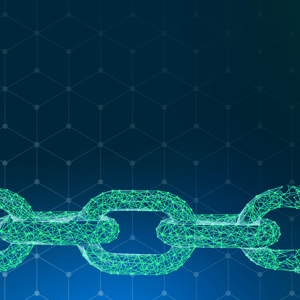
Digital Supply Chains, Digital-First Thinking and Future-Proofing
Conversations about digital transformation increasingly include questions about digital supply chain – a newish concept. Here’s our take on it.
The native digital supply chain is the digital infrastructure stretching from an enterprise core to any edge, including converged wireline and wireless infrastructure. It’s “native” because it extends the concept of cloud native (developed specifically for cloud) into the holistic infrastructure. The “goods” are data shared in digital ecosystems, passed by workloads deployed on-premises, in colocation data centers and clouds, and at edges. Stakeholders integrate into the digital supply chain at various points and, as we are seeing, data is gathered, processed and acted on at various locations as well.
This paradigm shift from single-enterprise focus to an interconnected ecosystem in which participants share data is influencing IT modernization strategies. Why? Because an optimized digital supply chain can be a competitive advantage now and establish the flexibility to help future-proof a business.
Interconnection: The Foundation of Digital Supply Chains
Native digital supply chains run on interconnection – physical and virtual connectivity enabling efficient traffic routing and data exchange among parties on a distributed network. Interconnection is an IT modernization strategy that helps:
- Improve decision-making and judgements based on data culled from the digital ecosystem
- Leverage data science including artificial intelligence (AI) and data literacy¹
- Increase revenue opportunities by speeding time to market and expanding market reach
- Elevate user experience
- Improve security and resilience
- Control costs
- Change infrastructure strategies quickly
IT Modernization: A Shift to Digital-First Thinking
Modernizing IT to define and optimize a digital supply chain is both necessary and multi-faceted. An initial, important shift is thinking in terms of digital-first and data-driven versus cloud-first. Cloud-first strategies ultimately disappoint – consider inflated data transfer costs and the inability to predict data volume usage. For more on this topic, read Solving IT Modernization Challenges with Hybrid IT.
According to Wharton Magazine², a digital-first mindset instinctively looks for digital solutions first for any opportunity or challenge, and this leads one to explore, adapt and apply new tech – and more:
- Leads to speedier operations where employees often collaborate with others and act in real time rather than wait for action either due to sequential workflows or traditional communications methods
- Helps drive higher engagement, data sharing and transparency, facilitates collaboration and increases data-driven/data-intelligent decision making
- Incorporates efficiency boosting technologies into business processes and leads to a digital way of working
Colocation: Enabling Digital-First Businesses
Many enterprises find it easier and faster to be digital-first through colocation, which can solve formidable challenges on the way to IT modernization.
Knowledge Gap
Future-Proofing: Optimize Customer Experience, Competitive Advantage and Revenue Growth
Future-proofing is about preparing for multiple possible business futures and capitalizing on digital supply chain opportunities to elevate customer experience, maximize competitive advantage and increase revenue. Interconnection is the key. Colocation data centers are ideal interconnection environments for several reasons, including:
- Ecosystem Density – When multiple entities are deployed in a data center, physical connections (cross connects), ethernet virtual circuits (virtual connects) and software-defined networking facilitate one-to-one and one-to-many data exchange. The value of density in regard to customer experience is the ability to create automated, personalized and frictionless experiences.
- Proximity – Distance equals latency. Reducing the distance between ecosystem members by colocating in the same facility or data center campus is a simple solution for minimizing latency. Costs are reduced as well because long-haul network fees are eliminated.
- Direct Connections – Two types of direct connections are relevant to colocation. First, private physical and virtual connections between ecosystem members, which are the most secure and lowest latency, as mentioned. Second, direct connections to major cloud providers (CSPs) facilitate high-performance utilization of cloud services and significantly reduce data egress fees.
Take the Next Step to Future-Proofing Your Business
Read Native Digital Supply Chain Optimization, Data Centers fuel IT Modernization to learn more about native digital supply chains. It might get you thinking about hybrid IT infrastructure in a new way.
And, when you are ready, get in touch to discuss how you can achieve both technical and business objectives through IT modernization. Let’s talk!









